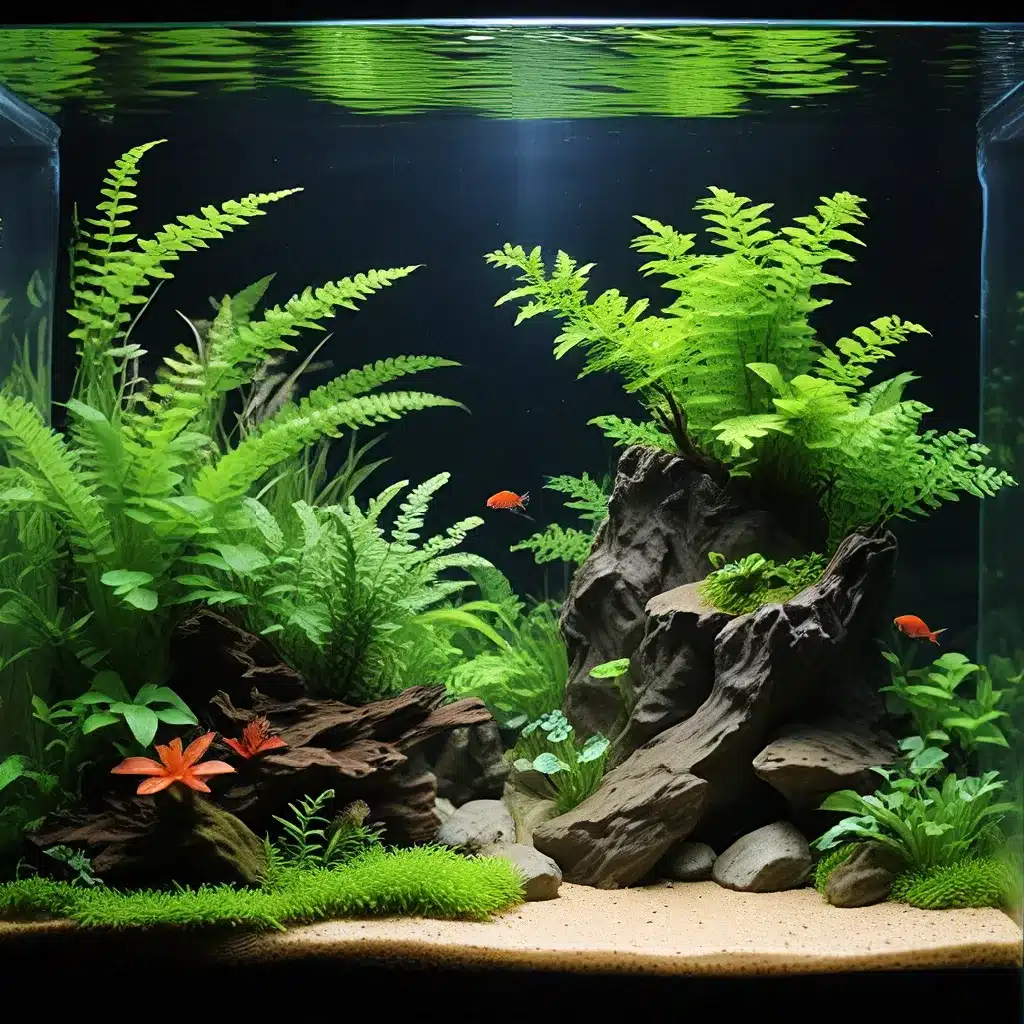
Designing and maintaining a thriving nano aquarium can be an incredibly rewarding experience for aquarium enthusiasts. These compact, self-contained ecosystems offer a unique challenge, requiring careful consideration of species selection, water management, and aquascaping techniques. In this comprehensive guide, we’ll explore the essential elements for creating and sustaining a vibrant nano aquarium that mimics the natural beauty of larger aquatic environments.
Understanding the Nano Aquarium Ecosystem
Nano aquariums, typically defined as tanks under 20 gallons in volume, are miniature versions of their larger counterparts. However, their small size does not diminish the complexity of the ecosystem that must be carefully balanced. These compact systems rely on a delicate interplay between fish, plants, and microorganisms to maintain water quality and support a healthy, self-sustaining environment.
Microorganisms: At the foundation of a thriving nano aquarium are the unsung heroes – the diverse array of bacteria, algae, and other microscopic life forms. These tiny creatures play a crucial role in breaking down waste, processing nutrients, and regulating the overall health of the system. Introducing a wide variety of microorganisms from local water sources can help increase the biodiversity and resilience of the nano aquarium ecosystem.
Plants: Aquatic plants are not only visually stunning but also serve as vital components of the nano aquarium’s ecosystem. Their roots provide additional surface area for beneficial bacteria to colonize, while their leaves and stems offer shelter and feeding grounds for small fish and invertebrates. Carefully selecting a mix of low-light, slow-growing plant species can create a thriving, self-sustaining environment.
Fish: The fish inhabitants of a nano aquarium must be chosen with great care, as overstocking can quickly disrupt the delicate balance. Small, peaceful species that thrive in confined spaces, such as pygmy corydoras, Endler’s livebearers, or harlequin rasboras, are well-suited for nano aquariums. Maintaining an appropriate fish-to-water volume ratio is crucial for water quality and the overall health of the ecosystem.
Aquascaping Techniques for Nano Aquariums
The art of aquascaping, or the careful design and arrangement of aquatic elements, is particularly important in the nano aquarium setting. With limited space, every element must be thoughtfully considered to create a visually stunning and functionally balanced environment.
Hardscape Elements: The foundation of any aquascape begins with the hardscape, which includes rocks, driftwood, and other non-living structures. In a nano aquarium, these elements should be carefully selected and arranged to provide visual interest, create hiding spots for fish, and offer additional surface area for beneficial bacteria and plant growth.
Substrate Selection: The type of substrate used in a nano aquarium can significantly impact the overall ecosystem. Fine-grained substrates, such as aquarium sand or planted soil, can provide a stable foundation for rooted plants and support the growth of beneficial microorganisms. Choosing the right substrate can also influence the pH and water chemistry, which are crucial factors in maintaining a thriving nano aquarium.
Plant Placement and Arrangement: Arranging the aquatic plants in a visually appealing and functionally effective manner is a key aspect of nano aquascaping. Placing taller, background plants behind shorter, foreground species can create a sense of depth and perspective, while strategically positioning plants to provide cover and hiding spots for fish can enhance the overall ecosystem.
Lighting Considerations: Appropriate lighting is essential for the health and growth of aquatic plants in a nano aquarium. Choosing a high-quality LED lighting system and providing the right intensity and duration of illumination can ensure that the plants thrive, contributing to the overall balance of the ecosystem.
Water Management Strategies for Nano Aquariums
Maintaining optimal water quality is a critical component of successful nano aquarium management. Due to the small volume of water, these miniature ecosystems are highly sensitive to fluctuations in parameters such as pH, temperature, and dissolved oxygen levels.
Filtration and Water Circulation: Effective filtration is essential for keeping the water clean and clear in a nano aquarium. Choosing the right filter, whether it’s a hang-on-back or internal filter, and ensuring proper water circulation can help maintain a balanced ecosystem and support the growth of beneficial microorganisms.
Water Testing and Maintenance: Regular water testing and partial water changes are crucial for nano aquariums. Monitoring parameters like pH, ammonia, nitrites, and nitrates can help identify any imbalances or potential issues before they become problematic. Performing periodic water changes can help replenish essential minerals, remove accumulated waste, and maintain optimal water quality.
Nutrient Management: Balancing the input and uptake of nutrients in a nano aquarium is a delicate dance. While aquatic plants require essential nutrients for growth, an overabundance can lead to algae blooms, which can disrupt the ecosystem. Carefully dosing fertilizers and monitoring nutrient levels can help maintain a healthy, thriving nano aquarium.
By understanding the intricate relationships within a nano aquarium ecosystem, aquarists can create and maintain vibrant, self-sustaining environments that showcase the beauty of aquatic life. Remember, patience and attention to detail are key when establishing a thriving miniature ecosystem in your home. With the right care and techniques, your nano aquarium can become a captivating centerpiece that brings the wonders of the underwater world right to your fingertips.

